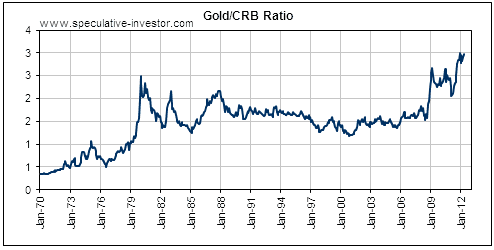Personal Finance
The Social Security Trust Fund (SSTF) 2012 report to Congress is now out (link). It’s 242 pages and contains a great deal of information. I have reviewed a number of sections in the report that I consider to be key measures of SS’s health. Not one of those variables showed any improvement. Some highlights:
-The Net Present Value of the unfunded liabilities at SS is now a staggering $20.5 Trillion. One year ago this was $17.9T ($2.6T increase – 15% YoY). This yardstick grew at more than double the rate of the entire national debt 12/31/10 = $14T, 12/31/11 = $15.2T, total increase = $1.2T).
This deterioration is staring policy makers in the face. The burden that SS will put on future generations is growing exponentially.
+
-The “Drop Dead Date” where the SSTF is exhausted has been moved up three years to 2033. This is a number that the MSM will focus on. It is a bogus deadline. The SSTF must maintain at least one year’s worth of benefits. The year that TF assets will equal one year of payments will be ~2026. This means that anyone who is age 53 today can expect to get 75% of the value that a baby boomer will get. (Under current law, when the TF is exhausted, benefit payments must be cut.)
Fourteen years is not a very long time for people to plan and adjust for what’s coming. The Politicians will have to address this reality sooner versus later. It is already passed the time where it is unfair to those who will be affected.
+
-The Drop Dead Date for the Disability Fund has been changed from 2017 to 2016. This is important as the TF has confirmed that the next President will HAVE to bailout one component of SS. It is crucial to ask the candidates what they will do if elected. They better have an answer. When the debate on the future of Disability Insurance (DI) gets going, it will be marked with a sharp divide of opinions. It could easily be a factor in the election.
To Read More CLICK HERE


Jack Crooks
“I guess I should warn you, if I turn out to be particularly clear, you’ve probably misunderstood what I’ve said.”
– Alan Greenspan
Are there no limits whatsoever to monetary policy? It is beyond pathetic that a rising stock market seems the only substitute for real policy from our “best and brightest.” Why doesn’t it matter to them that it isn’t working? Are they that intellectually bankrupt and corrupt? Is it odd that very smart people outside the government continue to bet on QE 3,4,5,6…? Or is it the only bet? What in the world is going on here?
Orders for U.S. durable goods fell in March by the most in three years, indicating manufacturing will contribute less to growth this year.
Bookings for goods meant to last at least three years dropped 4.2 percent, the biggest decrease since January 2009, after a revised 1.9 percent gain the prior month, data from the Commerce Department showed today in Washington. Economists forecast a 1.7 percent decline, according to the median estimate in a Bloomberg News survey.
Now, would throwing more money into the banking system “help” this problem of slowing US growth momentum?
To Read More CLICK HERE

By Marin Katusa, Chief Energy Investment Strategist
I recently gave an interview on Business News Network (BNN) about natural gas. BNN is Canada’s largest news channel dedicated exclusively to business and financial news, so all kinds of market players rely on BNN to provide them with comprehensive coverage of global market activity from a Canadian perspective. Like similar news channels in the US, BNN intersperses real-time news coverage with economic forecasting and analysis, company profiles, and tips for personal finance.
I have been interviewed on BNN numerous times over the last five years, quizzed on the impacts of fracking, the forecast for uranium following Fukushima, the potential of new frontier oil regions, and the future for coal. This time, the topic was “Five Tips for Natural Gas Investors.” You can watch the interview if you want; I highly recommend it – the education is worth the time.
On-air interviews are usually pretty speedy affairs, so my BNN interview didn’t give me enough time to discuss each point in depth. The Dispatch gives me that opportunity, so here are my five tips for natural gas investors in a bit more detail.
1. Watch for Looming Reserve Writedowns
A resource estimate is a geologic best guess of how much of a commodity exists within a particular deposit, be it ounces of gold, barrels of oil, or cubic feet of natural gas. A geologist gleans information about the deposit’s size and grade from drilling results and then creates a statistical model of the deposit. From that model he or she can estimate the commodity count.
However, the amount in the ground is not the amount that can be produced. That’s where the reserve estimate comes in. Reserves are an estimate of the amount of a commodity within a deposit that can be extracted economically, which means reserves are a whittled-down subset of total resources. That whittling down process has two steps. First, geologic and technologic factors determine a resource’s recovery rate, reducing the resource to the parts that are “technically recoverable.” Then, economic considerations further reduce the resource to only the bits that are “economically recoverable.”
With natural gas, the advent of horizontal drilling and multi-stage fracturing altered the first parameter dramatically, ballooning North America’s technically recoverable gas resources to many times their earlier volume. And while gas prices held, reserves counts ballooned too.
The key bit there was “while gas prices held” – that honeymoon is over. Natural gas prices in North America have declined roughly 35% this year and are down approximately 60% over the last 12 months. Compared to the unsustainable highs reached prior to the recession, gas prices have fallen more than 80%.
To Read More CLICK HERE



What do William Lowndes Yancey, Edmund Ruffin, and Geert Wilders have in common? Even though the first two owned black slaves in the 1800s and the last of that trio has spoken out against the spread of Islam across Europe in recent years, no – they’re not all racists.
They’re all secessionists. Or at least wannabe secessionists.
Yancey and Ruffin were known to be part of the “fire-eaters” who devoted themselves to Southern independence as the Northern states sought to undermine the Southern economy by eradicating slavery.
Wilders, who has vehemently opposed the “immigration of Islam” from Muslim countries into Europe, now looks ready to defend The Netherlands, and the North, on a different front …
Over the weekend Wilders refused to engage Brussels in budget talks aimed at austerity. Now the EU faces a political commotion from The Netherlands as it tries to bring the region together and mitigate recession. Wilders has said he wants The Netherlands out of the euro and wants to bring back the Dutch guilder. He’s tired of the constant patchwork responses from EU and Eurozone leaders.
Of course, this is just one guy who doesn’t have the clout to really pull strings at any given moment; but he is loud enough and prominent enough to be heard and seen. And we know how much the status quo hates dissent, no matter where you are.
Yesterday, the ruling Netherlands government fell over disagreement about ongoing Eurozone austerity measures. Hmmm … Timely for Mr. Wilders – he is putting the big question on the table: can the euro survive in its current form?
My view – it doesn’t seem so.
To Continue Reading CLICK HERE















